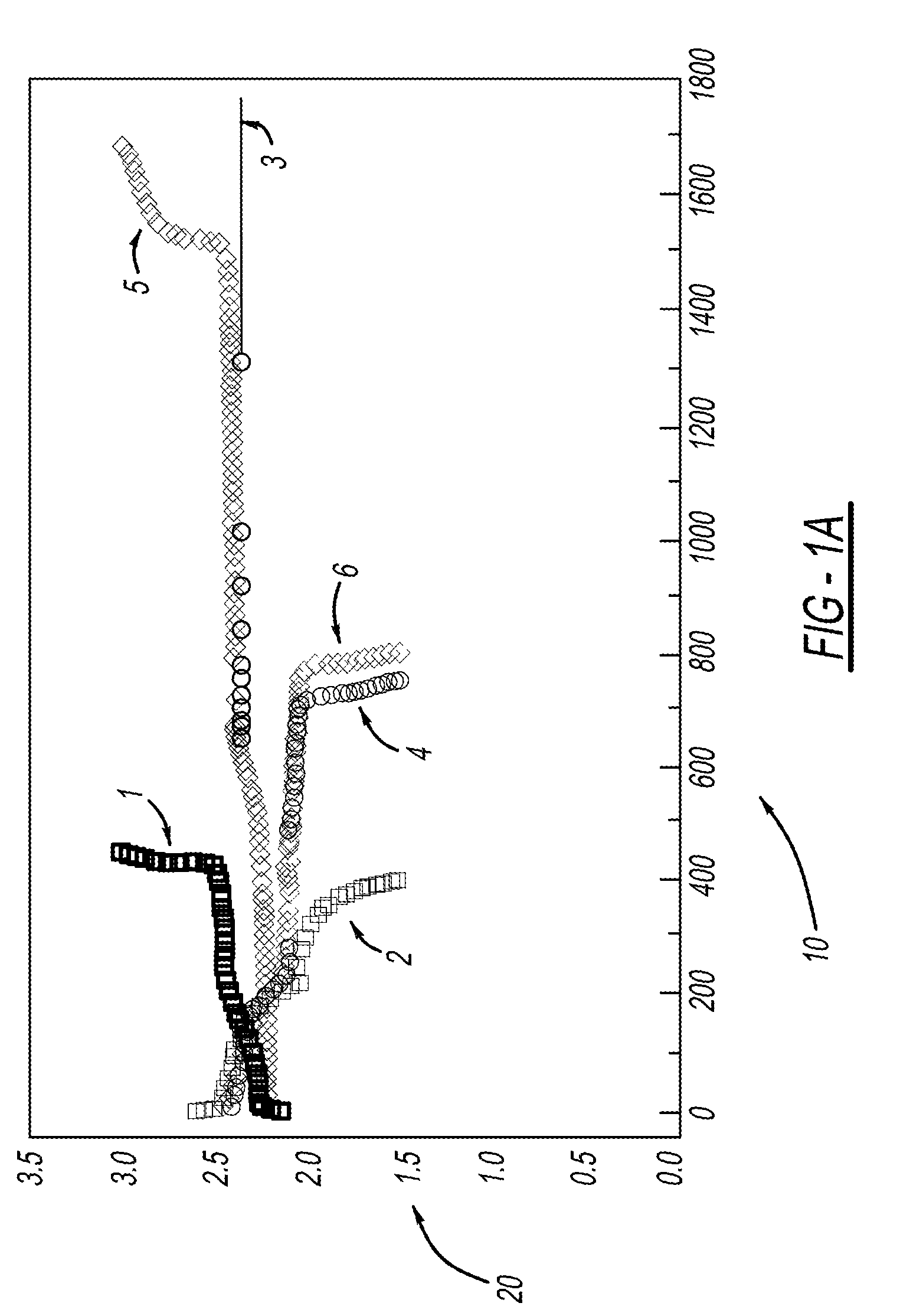Electrolyte additives for lithium sulfur rechargeable batteries
a rechargeable battery and additive technology, applied in the direction of li-accumulators, electrochemical generators, electric devices, etc., can solve the problems of reducing the power of the li-s battery, reducing the discharge rate, and losing active materials, so as to achieve the effect of reducing the redox-shuttle phenomenon
- Summary
- Abstract
- Description
- Claims
- Application Information
AI Technical Summary
Benefits of technology
Problems solved by technology
Method used
Image
Examples
example 1
[0029]LiMOB, which has a five membered ring and a six membered ring (dimethyl substituted 6-membered ring in the case of the dimethyl LiMOB), is effective at mitigating the effects of the polysulfide redox-shuttle reaction. Although the invention is not to be limited by theory, it is felt that the five-membered ring on the LiMOB and other lithium oxalatoborate related compounds can readily decompose on the anode to form a stable solid-electrolyte interface layer (SEI) to block the contact of the polysulfide anions. In the case of LiMOB, the bulky six-membered ring structure, which is not as reactive due to the less strain, offers a further steric hindrance to effectively block the polysulfide anions from coming directly into contact with lithium metal of the electrode. As seen in FIG. 1, addition of 0.3M LiMOB into the electrolyte enables successful cycling a of Li—S battery, even in the most aggressive solvent system of dimethoxyethane (DME) and dioxolane (DIOX).
[0030]FIG. 1a shows...
PUM
| Property | Measurement | Unit |
|---|---|---|
| concentration | aaaaa | aaaaa |
| soluble | aaaaa | aaaaa |
| charging voltage | aaaaa | aaaaa |
Abstract
Description
Claims
Application Information
 Login to View More
Login to View More - R&D
- Intellectual Property
- Life Sciences
- Materials
- Tech Scout
- Unparalleled Data Quality
- Higher Quality Content
- 60% Fewer Hallucinations
Browse by: Latest US Patents, China's latest patents, Technical Efficacy Thesaurus, Application Domain, Technology Topic, Popular Technical Reports.
© 2025 PatSnap. All rights reserved.Legal|Privacy policy|Modern Slavery Act Transparency Statement|Sitemap|About US| Contact US: help@patsnap.com



